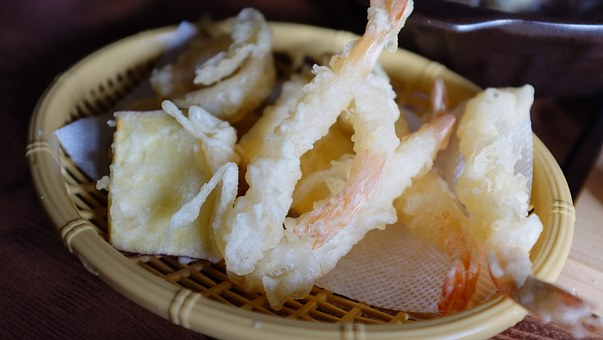
Battered, deep-fried, classic, crispy and oh so delectable- there’s no limit to the number of ways to enjoy tempura. Even though you’re familiar with tthe tempura at your local Japanese restaurant, have you ever wondered how this dish came to be? You’ll never guess the surprising history of this simple, yet quintessential comfort food.
Check out these 5 amazing facts about Japanese tempura!
The Portuguese introduced the batter to the Japanese.
Portuguese Jesuit missionaries introduced a battered and fried green bean dish, peixinhos da horta, to the Japanese city of Nagasaki, circa 1549. Peixinhos da horta, or “little fish of the garden”, was traditionally eaten during Lent as an alternative to meat dishes, which are prohibited during Lent.
Sailors relied on frying the green beans as a way to preserve them on long voyages. This dish also came handy for the poor who could not regularly afford to eat fish.
No one knows where the word “tempura” is derived from.
There is a lot of debate surrounding the origins of the name tempura. Some etymologists believe that it is derived from the latin word tempora, which means “a time period”. It was used in relation to the fasting period of Lent. Others believe that it is related to the Portuguese word, temporo, or “seasoning”.
There’s a few secrets to getting that perfect light, crispy bite to tempura:
To make a perfect tempura batter, use panko and ice water. Never let the batter sit and never over-mix it! A lumpy batter is good!
The food that you’re coating with the batter must be patted dry. Once the food is patted dry, dredge it in flour so that the batter can evenly adhere to the food. Keep your oil at a high, even temperature to avoid overly oily food.
A Portuguese chef wants you to experience Portuguese and Japanese tempura cuisine side-by-side.
Portuguese chef, Jose Avilla, is crafting a creative tasting menu that will feature Portuguese dishes like peixinhos da horta and other Portuguese dishes that have inspired Japanese cooking.
The menu, cleverly titled “1543” after the year that the Portuguese arrived in Japan, features traditional Portuguese meals as well as the Japanese renditions inspired by the traditional Portuguese fare.
January 7th is National Tempura Day
January too far away? Celebrate tempura today and everyday by whipping up your own tempura dish with one of these tasty recipes!
Crispy Tempura Vegetables With Miso Mustard
Japanese Style Asparagus Fries

